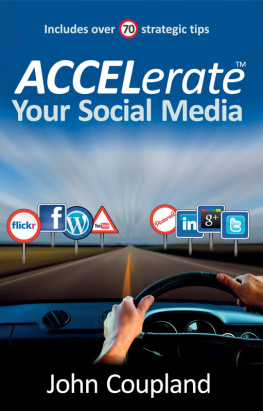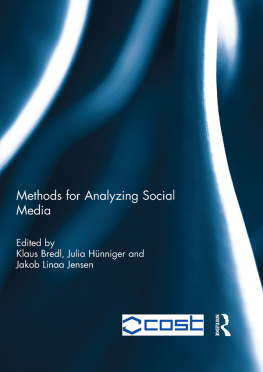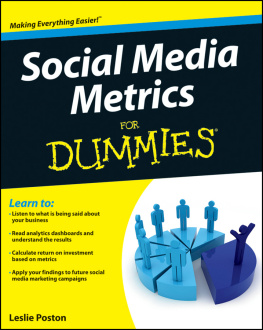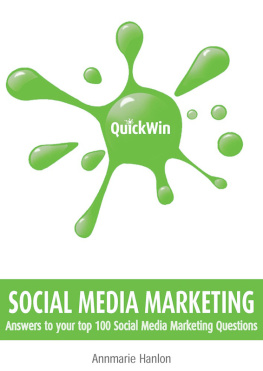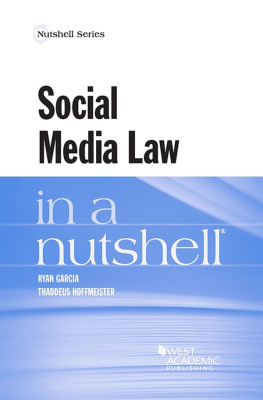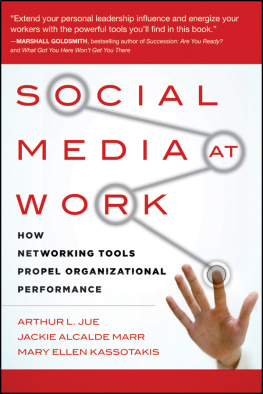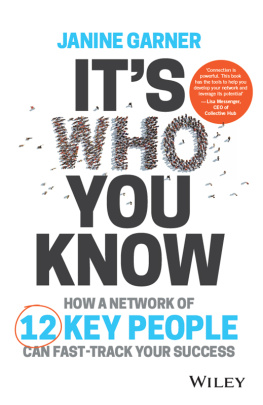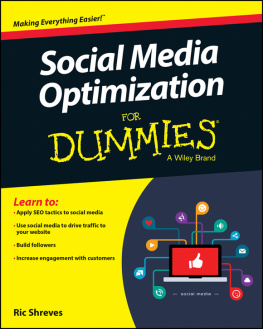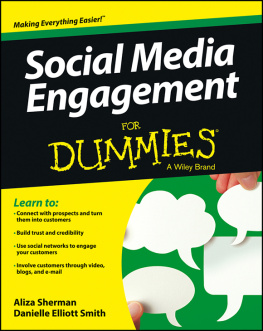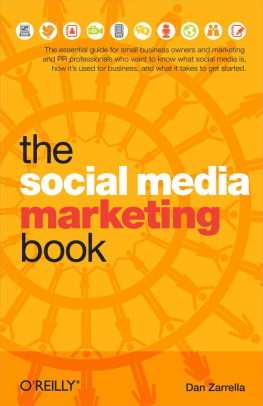ACCELerateYour Social Media
John Coupland

Dedicated to Dad, Major Derrick J. Coupland, OBE
You were an outstanding networker who inspired so many, not least the WW2 veterans you helped and led during my younger years in Singapore. You taught me so much however, regretfully, not your skilful humour. Your grandchildren, whom you sadly never knew, are always moaning about my poor jokes! ;)
Missing you and thinking of you every day. x
To my dear wife Angeline and our children, Kimmy, Steph and Jack.
Without you, this book would not have been possible. Great teamwork! Thank you.
Yours infinitely. xxxx
Change is the law of life. And those who only look to the past or present are certain to miss the future.
John F. Kennedy
Will you embrace change?
ACCELerateYour Social Media
First published in 2012 by
Ecademy Press
48 St Vincent Drive, St Albans, Herts, AL1 5SJ UK
www.ecademy-press.com
Graphics and original set by Angeline Coupland
Illustrations by Stephanie and Jack Coupland
Pictures and videos, via links and QR codes, by Kimberley Coupland
Printed on acid-free paper from managed forests.
This book is printed on demand to fulfill orders, so no copies will be remaindered or pulped.
ISBN 978-1-908746-61-0
The right of John Coupland to be identified as the author of this work has been asserted in accordance with sections 77 and 78 of the Copyright Designs and Patents Act 1988.
A CIP catalogue record for this book is available from the British Library.
All rights reserved. No part of this work may be reproduced in any material form (including photocopying or storing in any medium by electronic means and whether or not transiently or incidentally to some other use of this publication) without the written permission of the copyright holder except in accordance with the provisions of the Copyright, Designs and Patents Act 1988. Applications for the copyright holders written permission to reproduce any part of this publication should be addressed to the publishers.
This book is available online and in all good bookstores.
Copyright 2012 John Coupland

Acknowledgments
Thank you also to my reviewers for their time and feedback. Im most grateful to you.
Kevin Horlock, Dale Carnegie Training
Andy Snook, Performance Evaluations
Debbie Hunt, Lexus, Hatfield
Isabelle Fredborg, Solo Business Tools

Foreword
1977. A military bunker somewhere below north London. Everyone wears nuclear, biological and chemical suits with respirators. A report is needed from HQ RAF Germany about the readiness of aircraft to fly immediate missions. The landline telephones are down.
A worryingly young RAF officer called Kevin Horlock sits in front of a clunky keyboard which he uses to type a message in abbreviated RAF code to his opposite number in Rheindahlen in Germany. Eerie green letters appear slowly on a plain black screen in a single line; he presses send; message sent; job done; aircraft status updated.
Does any of that sound familiar today? Typing abbreviated words; short messages; simple text; no pictures; instant transmission? Try short message service (SMS) text messages on your smartphone or mobile phone; compose instant messages on Skype or MSN Messenger; dispatch a Tweet Just simple text: characters, numbers, no frills. Has that much really changed in the intervening 35 years?
It has. Technology has certainly developed at an astonishing pace: how much has our behaviour changed as a direct result? There are an estimated 2.3 billion internet users today and 6 billion telephones in the world. In January 1993 there were 50 sites on the web: today the estimate is 650 million. And we use all of these methods principally to communicate with other people in some way. What the internet did for the first time was to allow the web to provide many-to-many communications: telephones, print, faxes operate one-to-one. To put this into perspective, its estimated today that, every minute, 50 hours of video are uploaded onto YouTube, Facebook users share almost 650,000 pieces of content, 170 million emails are sent and over 180,000 tweets are sent. Every minute.
None of us can hope to connect in a substantial way with 2 billion people: John Coupland helps us to get these almost incomprehensible figures into perspective. Johns masterly book is essential reading for everyone in business today. For those of my boomed generation who peered askance when mainframes, minicomputers, microcomputers, personal computers and smartphones metamorphosed from the slide rule; for those stalwarts of Generation X who joined this journey in the 1980s when simple word-processing machines, large luggable bricks called mobile phones and squawking magic boxes called modems became ubiquitous; for the pioneers of Generation Y who are calmly nonchalant about their ability to stand in some corner of a foreign field with a device no bigger than a bar of chocolate, tethered to nowhere, and talk and send pictures to friends and family near the White Cliffs. And we can all still do today what the young Horlock did in 1977 and send strings of simple text around the world.
The challenge John throws down to us all is not which buttons on which social media applications to press, but, rather, why we should bother engaging with social media. That might seem such an obvious starting point for all us hard-headed business folk, but its one rarely addressed in my experience by most self-professed social media experts or to use a title John is rightly wary of, self-proclaimed gurus.
What makes this thought-provoking business book a gem, is its progeny: in John is a synthesis of cutting-edge corporate ecommerce and sales, the agony and the ecstasy of self-employed business ownership and the brutal realities of face-to-face business networking. Some people try social media to avoid the inconvenience of face-to-face relationships; others dabble in social media because they see a new opportunity to pitch their business to more people without the embarrassment of facing rejection; yet more immerse themselves in social media white noise because its more fun than making cold calls or because they have an axe to grind.
Through all this, at some stage, we have to engage with real people and engage with them effectively. John D Rockefeller founded Standard Oil, which became the largest oil refining business in the world in 1911, and was the richest man in modern history. As a great philanthropist, he gave away much of his wealth. Rockefeller said, The ability to deal with people is as purchasable a commodity as sugar or coffee and I will pay more for that ability than for any other under the sun.
Many, many years ago both John and I quite independently read for the first time How to Win Friends and Influence People, written by Dale Carnegie in 1936. It contains 30 of what he termed Human Relations Principles, which show us fundamental techniques in handling people, ways to make people like us, how to win people to our way of thinking and how to change people without giving offence or arousing resentment. As a part of his research for the book, Carnegie interviewed scores of successful people: inventors like Marconi and Edison, politicians like Roosevelt, business people, actors, explorers. Long before the internet, web or mobile phones, Carnegie also received the results of a telephone study which reported that in 500 telephone conversations the word I was used 3,900 times. People love to talk about themselves: imagine how much higher that figure is likely to be today with the plethora of social media opportunities we have. Try it: count how many times the word I appears in your outbox.

